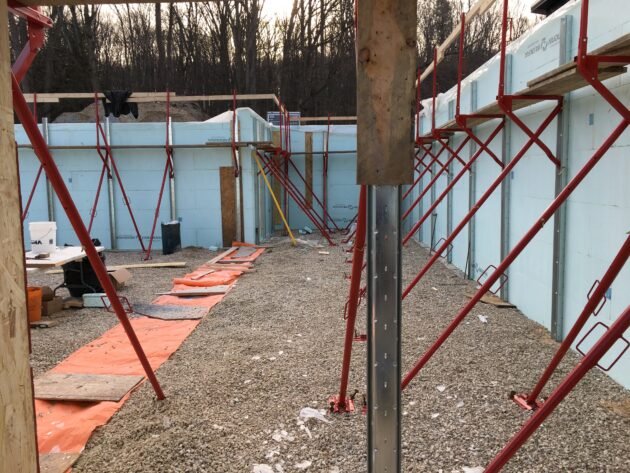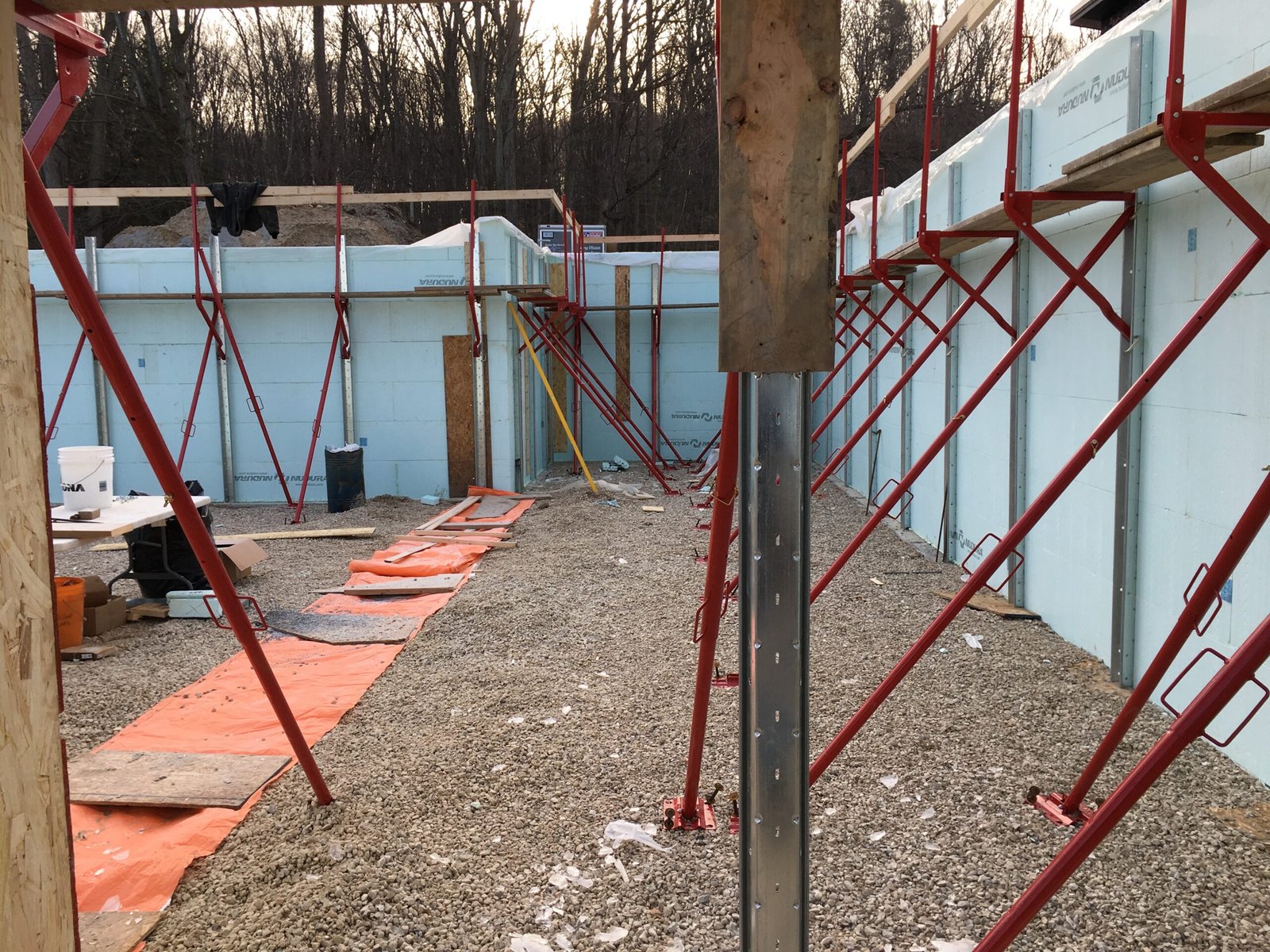
ICF vs. Stick-Built Construction in Ontario: The Ultimate Showdown
When it comes to building a home in Ontario, you have two primary choices: Insulated Concrete Forms (ICF) or traditional wood-frame construction. It’s kind of like choosing between a reliable tank and a wooden cart—one’s built to withstand just about anything, while the other gets the job done but might leave you patching things up down the road.
So, which method reigns supreme? Let’s compare these two contenders across energy efficiency, durability, cost, and more—because when you’re investing in a home, you want it to be worth every hard-earned dollar.
1. Energy Efficiency: The Battle Against Ontario Winters
ICF:
- Acts like a thermos for your home, thanks to continuous rigid foam insulation and a solid concrete core.
- Eliminates thermal bridging (a fancy way of saying it doesn’t let heat escape through gaps in the insulation).
- Cuts heating and cooling costs by up to 50%. That’s like paying for a Toyota Corolla but driving a Tesla when it comes to energy savings!
Traditional Construction:
- Uses wood framing and fiberglass insulation, which—let’s be honest—is about as good at keeping heat in as a screen door on a submarine.
- Prone to air leaks and thermal bridging, meaning higher utility bills (and more regret in the winter).
👉 Winner: ICF. Your wallet will thank you every time you see that hydro bill.
2. Durability & Strength: The “Will It Survive?” Test
ICF:
- Reinforced concrete means it stands up to rot, pests, floods, heavy snow, and even earthquakes. Basically, if your home were in an action movie, it would be the hero that survives everything.
- Minimal maintenance over time.
Traditional Construction:
- Wood framing is susceptible to termites, mold, rot, and warping. Think of it like a wooden ship—great at first, but eventually, it starts to creak and weaken.
- Requires more maintenance and repairs over the years.
👉 Winner: ICF. It’s like putting your home in a concrete suit of armor.
3. Fire Resistance: Who Holds Up in the Heat?
ICF:
- Concrete doesn’t burn. Period.
- Rated to withstand fire for up to 4 hours, giving you and your insurance company peace of mind.
Traditional Construction:
- Wood… well, let’s just say it’s flammable.
- Drywall offers some protection, but if fire takes hold, it’s game over pretty quickly.
👉 Winner: ICF. Unless you like the idea of turning your home into a campfire, ICF is the safer bet.
4. Noise Reduction: Peace and Quiet vs. Hearing Everything
ICF:
- The thick concrete core makes it whisper-quiet inside, even if you live near an airport or a highway.
Traditional Construction:
- Wood-frame walls do their best, but they just don’t block out noise like ICF does.
👉 Winner: ICF. Perfect for those who don’t want to hear their neighbor’s lawn mower at 6 AM.
5. Cost: Short-Term Pain vs. Long-Term Gain
Initial Costs:
- ICF: Higher upfront costs due to more expensive materials and specialized labor.
- Traditional Construction: Generally cheaper initially because wood is widely available and easy to work with.
Long-Term Costs:
- ICF: Lower energy bills (up to 50% savings), minimal maintenance, and a longer lifespan offset the initial cost.
- Traditional Construction: Higher utility bills and more maintenance costs over time.
👉 Winner: It depends. If you’re thinking short-term, traditional construction wins. But if you want a home that saves you tens of thousands in the long run, ICF is the smarter investment.
6. Construction Speed: Who Finishes First?
ICF:
- Faster than you think—walls go up 30–50% quicker because insulation and formwork are built in.
Traditional Construction:
- More steps = more time. Framing, insulation, sheathing… it all adds up.
👉 Winner: ICF. Get your dream home faster and move in sooner.
7. Limitations: Every Hero Has Its Kryptonite
ICF:
- Higher upfront cost.
- Requires contractors who know what they’re doing.
Traditional Construction:
- Less energy-efficient.
- More prone to environmental damage over time.
👉 Verdict: Every method has its downsides, but ICF’s trade-offs are worth it for long-term benefits.
The Final Verdict: Which One Should You Choose?
| Feature | ICF | Traditional Construction |
|---|---|---|
| Energy Efficiency | 🏆 Superior (up to 50% savings) | Moderate |
| Durability | 🏆 High (resists rot, pests, weather) | Moderate (prone to rot, pests) |
| Fire Resistance | 🏆 Excellent (up to 4 hours) | Poor |
| Noise Reduction | 🏆 Excellent | Moderate |
| Initial Cost | Higher | 🏆 Lower |
| Long-Term Savings | 🏆 Significant | Minimal |
| Construction Speed | 🏆 Faster | Slower |
If you’re building a forever home in Ontario’s harsh climate, ICF is the clear winner. The upfront cost might sting a little, but in return, you get an ultra-energy-efficient, disaster-resistant, and low-maintenance home that will keep you comfortable for decades.
However, if budget constraints are a major concern and you’re okay with a more traditional (and maintenance-heavy) home, wood framing might still be an option.
But if you ever find yourself shivering in the winter or patching up termite damage, just remember: ICF was right there, waiting for you. 😉




